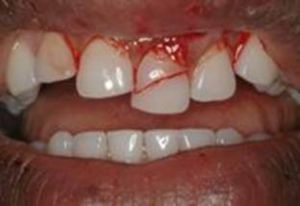 Among the injuries that can occur with the teeth, a special place is occupied by fractures. Moreover, there are several varieties of dental fractures - in the root, crown, or both.
Among the injuries that can occur with the teeth, a special place is occupied by fractures. Moreover, there are several varieties of dental fractures - in the root, crown, or both.
As a result, the injured tooth loses its immobility and changes its position relative to other incisors. If there is only a fracture of the crown, then later with the help of specialists, you can save the damaged tooth by restoring its damaged part.
The situation is somewhat different when it comes to fracture of the roots. In this case, the solution is only one - the extraction of the tooth. But do not forget that fractures can cause complications, which also require a professional approach to therapy.
Contents
- Causes and provoking factors
- Classification and varieties
- Symptoms of damage
- Diagnostic methods
- How is treatment performed?
- Consequences of injury
Causes and provoking factors
The following factors can be the cause of tooth integrity disorder:
- is often a violation not only of appearance but also of the tooth's integrity due to an incorrect approach to removal or dental treatment - a careless attitude of a specialist may be worth the health;
- do not forget that any disease that affects the dentition can have quite serious consequences, so the destruction of the crown is often the result of untreated untreated caries;
- disposition to tooth dislocations and fractures can be associated with anatomical structure.
In addition to the above factors affecting tooth decay, there are other: 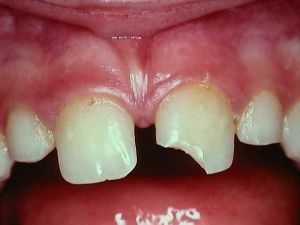
- mechanical effect on the jaw, so a tooth injury can occur due to impact, fall, accident, fight, participation in extreme sports and other similar conditions;
- to damage the tooth can be at the time of eating, subject to excessive hardness of the products or getting into a foreign body dish;
- also, the etiology includes bad habits, people's addiction to nail biting, opening bottles with teeth and so on.
Classification and varieties
The front teeth are most often damaged. In dental practice, several classification schemes are used.
Fractures differ in the degree of damage, that is, they happen:
- trauma with the subsequent fracture of the crown , can occur with the opening of the tooth cavity or without it;
- also, as a result of exposure to the tooth, may occur root fracture;
- often meets a combined type, that is, a fracture that affects both the crown and the root of the .
Dental fractures differ in the direction of injury, which is also important to know during treatment. Thus, a transverse, longitudinal or oblique fracture is distinguished, as a result of the latter type, often the root and tooth crowns are damaged.
In medicine, there is a classification according to the degree of injury:
- due to complete fracture , the pulp is opened, in turn, trauma to the tip of the root, neck or root of the tooth can be noted;
- incomplete fractures are not accompanied by opening the pulp and are: cracks in dentin and enamel, edge fracture of the crown in the area of dentin and enamel, as well as marginal crown damage only in the enamel zone.
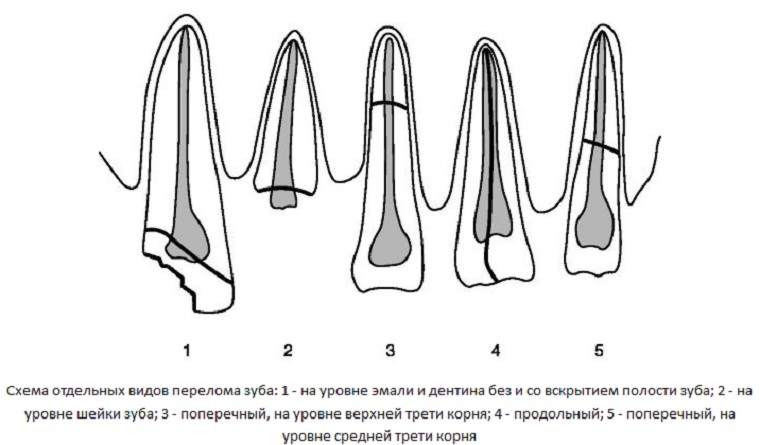
Symptoms of damage
Symptoms of trauma are quite clear, it is often enough to study the symptoms to diagnose a fracture of the tooth.
The fracture is as follows:
- acute pain syndrome;
- discomfort during meals and during movement, and speech problems are noted;
- shows excessive mobility of the tooth;
- blood appears in the area of trauma;
- surrounding soft gum tissue swelling due to trauma.
In some cases, the damaged tooth may fall out of the well. Moreover, cases where the root of the incisor remains in place are quite common.
Diagnostic methods
It is quite easy to diagnose a fracture during visual inspection. But in case this is not enough, a number of other activities are carried out in order to establish the fact of the presence of trauma:
- An X-ray examination of is performed to exclude or confirm the root fracture. In addition,
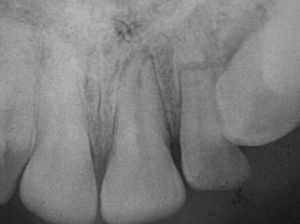
is determined by fracture of the root of the incisor on X-ray
direction of fracture, degree of formation of the root system and other information affecting the effectiveness of treatment.
- In the event of fracture, the specialists conduct percussion of in order to determine if adjacent teeth have been affected. Horizontal and vertical percussion is performed. This method is aimed at identifying the presence of hemorrhages, edema, rupture of connective tissue.
- Also performed palpation , during which the specialist determines the degree of tool movement, bias and other symptoms. The degree of mobility depends on the methods of treatment.
- An important diagnostic method is EDI .Carrying out an electrodontometric examination can determine whether the pulp is in a viable state or not. Often, this method is performed several times to obtain the completeness of the clinical picture.
- The transilluminating method allows you to get as much information as possible about the state of the injured tooth. Such diagnostics are carried out by using flexible fiber-optic LEDs.
How is treatment carried out?
Proper diagnosis plays an important role in the treatment. Depending on the degree of damage to surrounding tissues and enamel, methods of therapy are selected. During the diagnostics, the degree of mobility of the incisor is determined, each of which implies its own treatment methods:
- with a fracture of of the first degree , which is called vestibulo, is used for tooth splinting;
- if is diagnosed with the second degree ( mediodistal), the treatment implies temporary stabilization with various tires;
- the last degree of mobility is called vertical and requires immediate splinting, in some cases, replantation is performed.
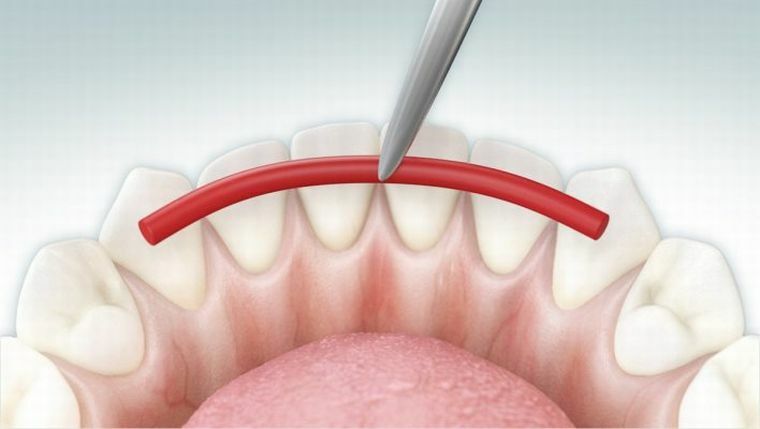
Splinting - a modern method of restoration of teeth
At a fracture of a root and a crown of a tooth a number of other medical actions are spent:
- tooth restoration is carried out if the cavity of the cutter has not been opened during the injury of the crown. At the same time, in order to restore the crown, modern composite materials are used.
- At the time when the root is not a quality support for the pin, and this happens with a splinter, oblique or longitudinal fracture, it is removed and the prosthesis or implantation of is performed.
- Not only the integrity, but also the appearance of the tooth is restored by installation of the metal-ceramic crown with transverse root fracture.
- Sealing of the channel is indicated when the upper part of the tooth is injured.
- Removal of pulp and trepanation of the tooth is performed when the middle part of the incisor is damaged. In addition, the specialist performs a canal filling, and the fragments with the help of the pins are attached to each other.
- Sealing of the canal and removal of pulp is carried out in case of tissue damage and opening of the cavity of the cutter. Pins are often used, this method can be used for other forms of fractures. And, before installing the pins, the tooth channels are cleaned and sealed. When carrying out filling of canals before the dentist, the task is to restore the anatomical position of the incisor.
If injury occurs, you should immediately contact a specialist, because a minute delay in the future can lead to tooth loss and the development of complications.
Consequences of
injury As a result of a dental fracture, if the treatment is not performed on time or the treatment methods are incorrect, complications can develop:
- , purulent inflammation of the tissues can occur;
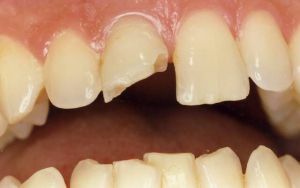
- often develops phlegmon( acute purulent inflammation of the cellulose);
- is probably an inflammation of the periosteum;
- the result of a fracture can be inflammation of the surrounding and connecting tissues to the alveolus;
- there is a displacement of the root of the cutter;
- can have inflammation of the connective tissues, which are permeated with lymphatic and blood vessels, nerves in the dental cavity.
